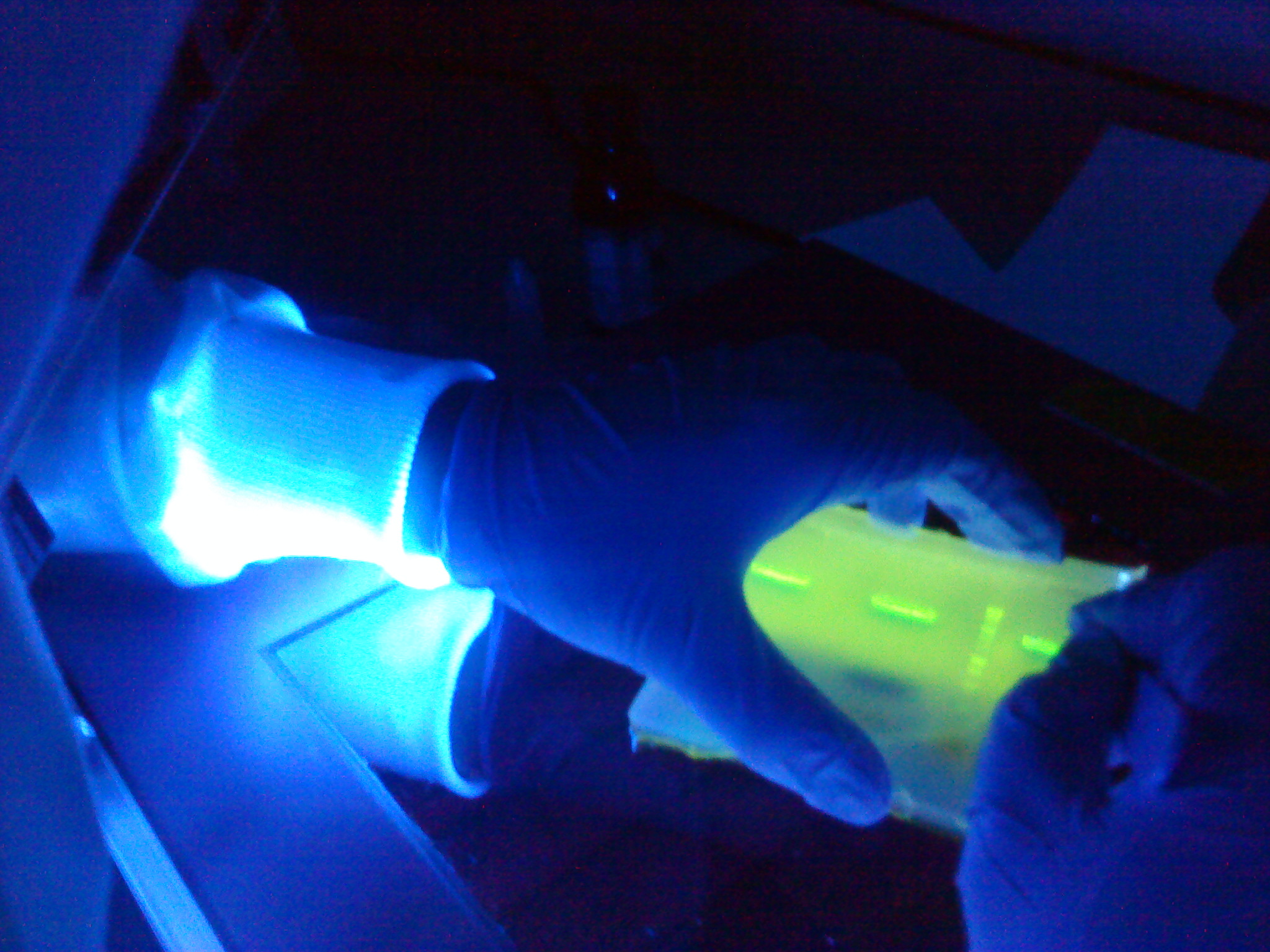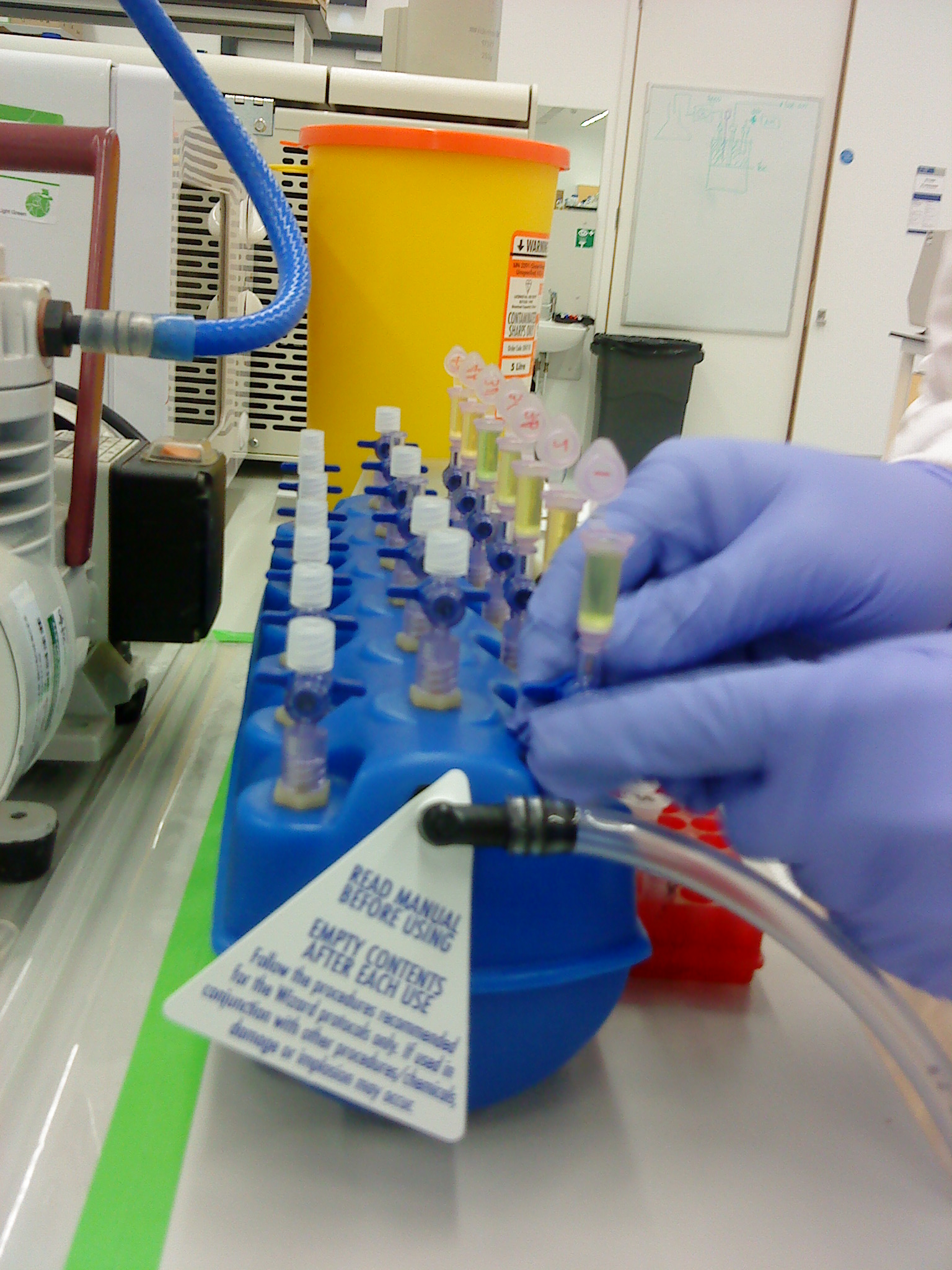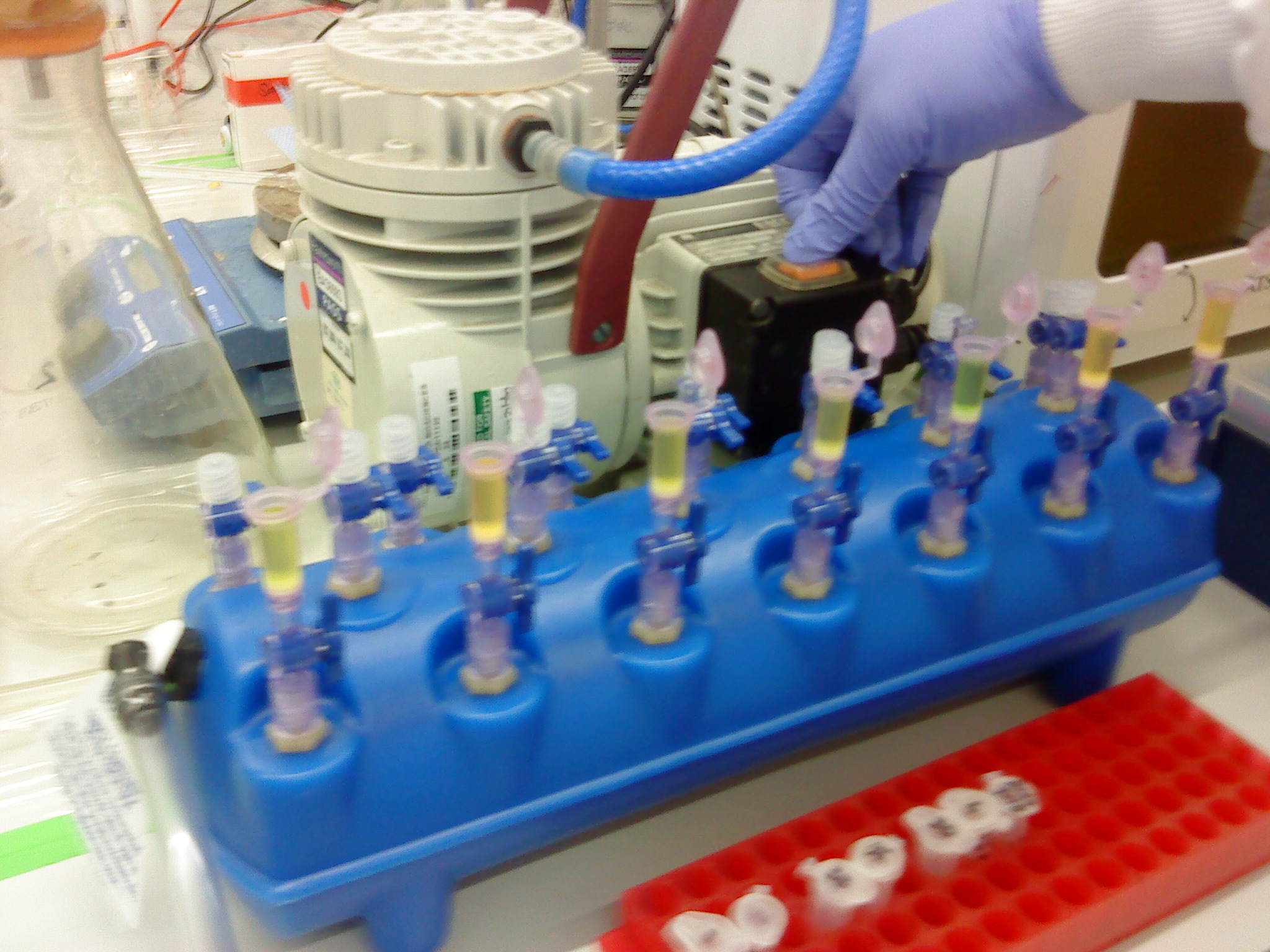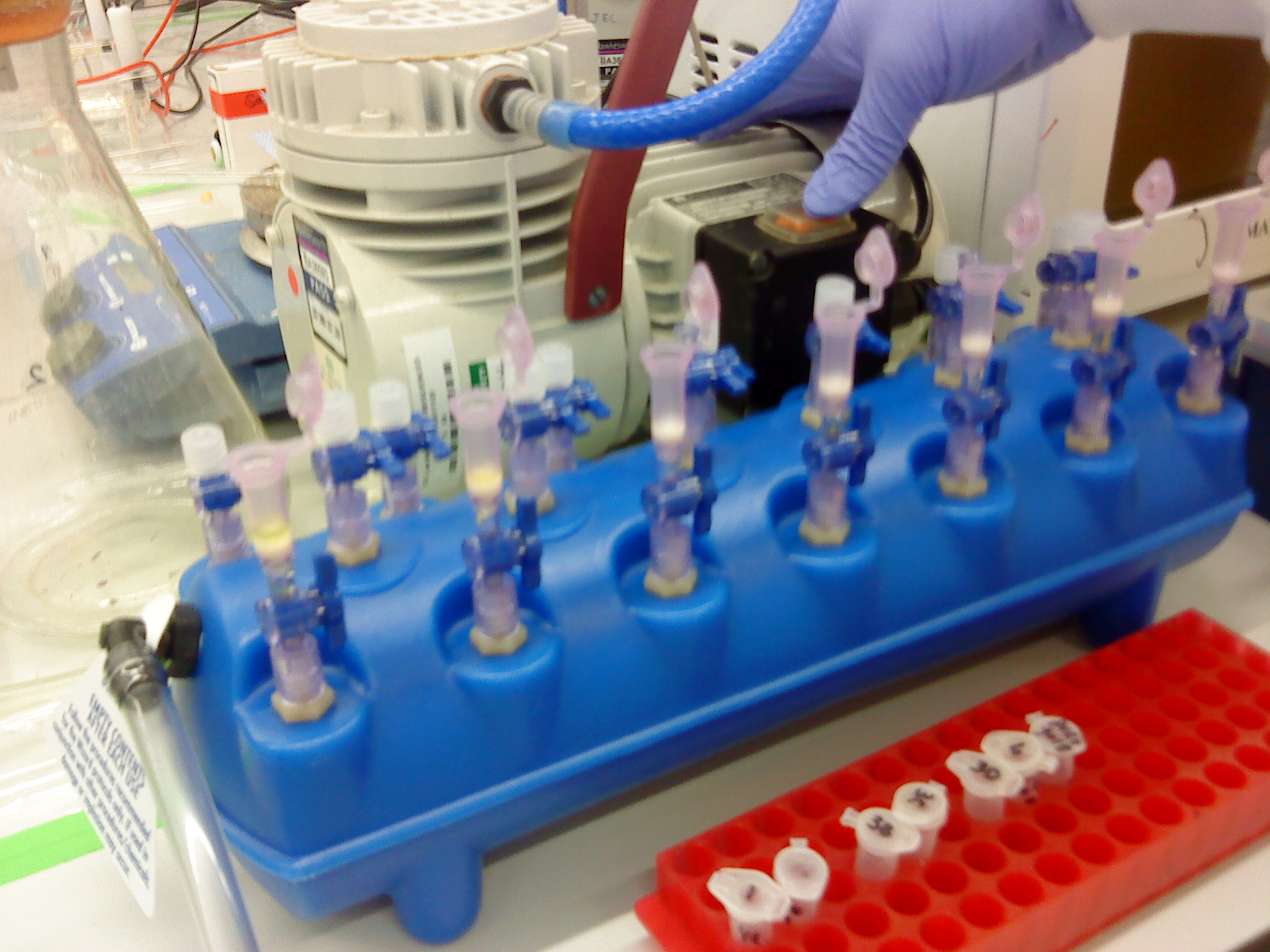Team:Newcastle/13 August 2010
From 2010.igem.org
(→Subtilin Immunity BioBrick) |
(→Materials and protocol) |
||
| Line 14: | Line 14: | ||
Please refer to the [[Team:Newcastle/Gel_extraction| gel extraction]] and [[TeamNewcastleNanoDrop_Spectrophotometer| NanoDrop]] protocols. Instead of using the centrifuge to bind the DNA from our sample to the QIAquick column, a '''vacuum manifold''' was used instead. It is the first time it had been used. The advantage of this was that the extraction could be carried out all at the same time. | Please refer to the [[Team:Newcastle/Gel_extraction| gel extraction]] and [[TeamNewcastleNanoDrop_Spectrophotometer| NanoDrop]] protocols. Instead of using the centrifuge to bind the DNA from our sample to the QIAquick column, a '''vacuum manifold''' was used instead. It is the first time it had been used. The advantage of this was that the extraction could be carried out all at the same time. | ||
| - | |||
| + | [[Image:Newcastle Gel Extraction of spaIFEG genes.JPG|200px|Gel Extraction of spaIFEG genes]] | ||
[[Image:Newcastle Vacuum Manifold 1.JPG|150px|Setting up the tubes for the vacuum manifold]] | [[Image:Newcastle Vacuum Manifold 1.JPG|150px|Setting up the tubes for the vacuum manifold]] | ||
[[Image:Newcastle Vacuum Manifold 2.JPG|150px|Setting up the tubes for the vacuum manifold]] | [[Image:Newcastle Vacuum Manifold 2.JPG|150px|Setting up the tubes for the vacuum manifold]] | ||
Revision as of 01:02, 26 October 2010

| |||||||||||||
| |||||||||||||
Contents |
Gel electrophoresis of subtilin immunity BioBrick fragments
Aims
The aim of this experiment is to do gel extraction for the spaIFEG gene cluster amplifed on the 12th August, 2010 and the Plasmid Vector, Promoter & RBS and Double terminator amplifed on the 11th August, 2010. Finally, NanoDrop will be performed for all the fragments.
Materials and protocol
Please refer to the gel extraction and NanoDrop protocols. Instead of using the centrifuge to bind the DNA from our sample to the QIAquick column, a vacuum manifold was used instead. It is the first time it had been used. The advantage of this was that the extraction could be carried out all at the same time.
Results
The results from the Nanodrop Spectrophotometer of the four parts are as follows:
- Vector - 21.3 ng/μl
- Promoter - 28.8 ng/μl
- Coding sequence - 27.0 ng/μl
- Terminator - 27.5 ng/μl
Discussion
We chose the three spaIFEG gene (part 3) PCR tubes, using Tms 51°C, 56°C and 61°C because they were the mid-ranged Tms. Gel extraction was then performed, by firstly cutting the gels under U.V light, and then apply the protocol for completion.
Conclusion
The results from the NanoDrop reading suggests that our results were positive, which indicates that we have successfully extracted all the parts required for the Subtilin Immunity BioBrick. Gibson cloning method will be used next week.
Go back to our main Lab book page
 
|
 "
"




